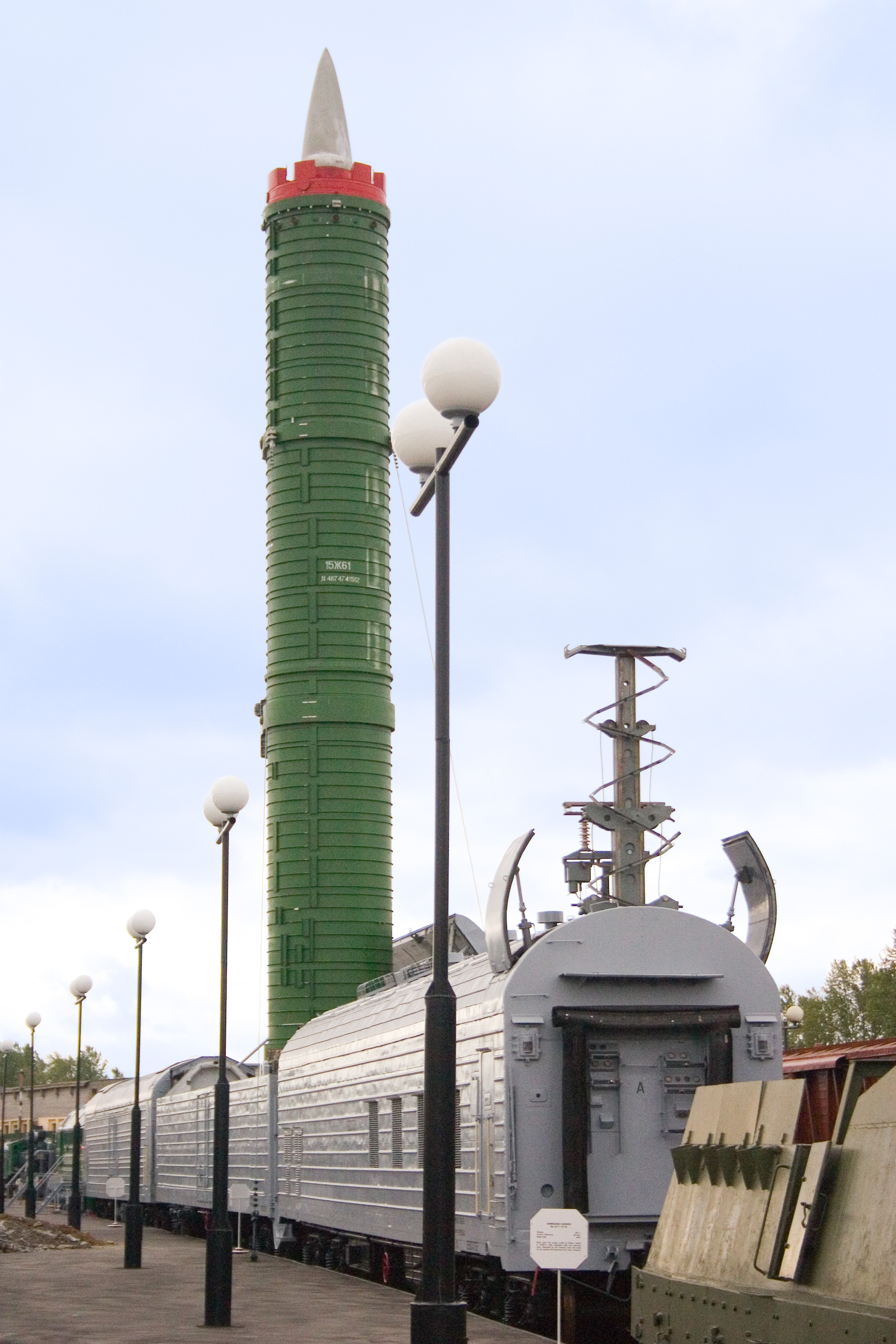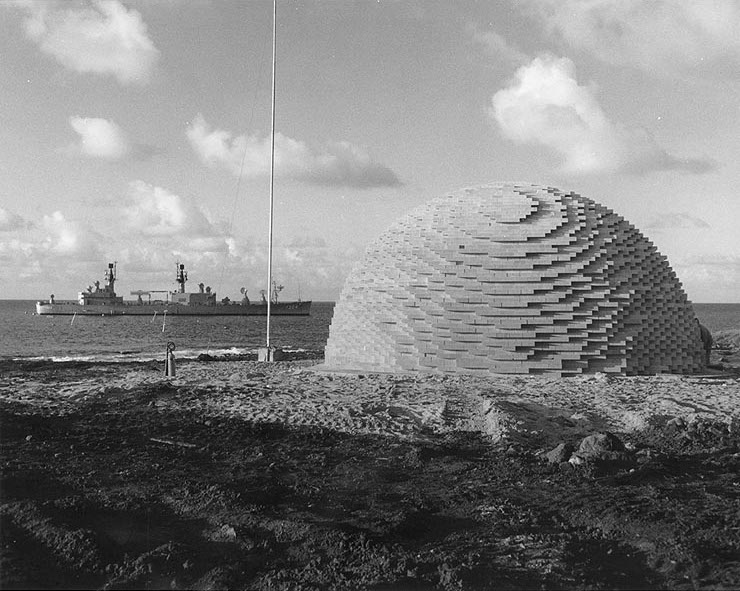|
RT-23 Molodets
The RT-23 Molodets (, lit. "brave man" or "fine fellow"; NATO reporting name: SS-24 Scalpel) was a cold-launched, three-stage, solid-fueled intercontinental ballistic missile developed and produced before 1991 by the Yuzhnoye Design Bureau in Dnipro, Ukraine (ex-Soviet Union.) It came in silo- and rail-based variants, and was armed with 10 MIRV warheads (GRAU index: ''15Ф444'') of 550 kt yield. All missiles were decommissioned by 2005 in accordance with the START II. History The missile and rail-based missile complex – or ''BZhRK'' (, lit. "''Combat Rail-based Missile Complex''") – were developed by the brothers Vladimir and Alexei Utkin as chief engineers in Yuzhnoye Design Bureau and Design Bureau for Special Machine-Building respectively. It was the culmination of a major Soviet effort to develop a solid-propellant ICBM with multiple basing modes which was initiated in 1969. As addition to the silo- and rail-based versions, a road-mobile version was considere ... [...More Info...] [...Related Items...] OR: [Wikipedia] [Google] [Baidu] |
USSR
The Union of Soviet Socialist Republics. (USSR), commonly known as the Soviet Union, was a List of former transcontinental countries#Since 1700, transcontinental country that spanned much of Eurasia from 1922 until Dissolution of the Soviet Union, it dissolved in 1991. During its existence, it was the list of countries and dependencies by area, largest country by area, extending across Time in Russia, eleven time zones and sharing Geography of the Soviet Union#Borders and neighbors, borders with twelve countries, and the List of countries and dependencies by population, third-most populous country. An overall successor to the Russian Empire, it was nominally organized as a federal union of Republics of the Soviet Union, national republics, the largest and most populous of which was the Russian SFSR. In practice, Government of the Soviet Union, its government and Economy of the Soviet Union, economy were Soviet-type economic planning, highly centralized. As a one-party state go ... [...More Info...] [...Related Items...] OR: [Wikipedia] [Google] [Baidu] |
Intercontinental Ballistic Missile
An intercontinental ballistic missile (ICBM) is a ballistic missile with a range (aeronautics), range greater than , primarily designed for nuclear weapons delivery (delivering one or more Thermonuclear weapon, thermonuclear warheads). Conventional weapon, Conventional, Chemical weapon, chemical, and Biological agent, biological weapons can also be delivered with varying effectiveness, but have never been deployed on ICBMs. Most modern designs support multiple independently targetable reentry vehicle (MIRVs), allowing a single missile to carry several warheads, each of which can strike a different target. The Nuclear weapons of the United States, United States, Russia and weapons of mass destruction, Russia, China and weapons of mass destruction, China, France and weapons of mass destruction, France, India and weapons of mass destruction, India, the United Kingdom and weapons of mass destruction, United Kingdom, Nuclear weapons and Israel, Israel, and North Korea and weapons of ... [...More Info...] [...Related Items...] OR: [Wikipedia] [Google] [Baidu] |
Vladimir Utkin
Vladimir Fyodorovich Utkin (; 17 October 1923 – 15 February 2000) was a Russian engineer and rocket scientist in the Soviet Union. He developed railcar- launched ICBM RT-23 Molodets and other Soviet rockets. Early life Utkin was born in the village of Pustobor, Ryazan Oblast, Russia. After graduation, he was drafted into the army. He fought in the Great Patriotic War, earning medals. He graduated from the Jet Armament department of Leningrad military engineering institute in 1952. He earned his Doctorate of Engineering in 1967. Career Utkin was sent to Special Design Bureau #586 in Dnepropetrovsk, where he worked on the organization of series production of first Soviet ballistic missiles R-1, R-2, R-5 designed by Sergey Korolev. After the foundation of Yuzhnoye design office, he worked as an engineer, senior engineer, group head, sector head, department head, Deputy and First Deputy Chief Designer. In 1971, he became Chief Designer, and then General Designer of Yuzhnoye ... [...More Info...] [...Related Items...] OR: [Wikipedia] [Google] [Baidu] |
Боевой железнодорожный ракетный комплекс БЖРК 15П961 Молодец (12) ...
This is a list of battles involving the Russian Federation. {{Russian conflicts Russian Federation * Russian Federation Battles Battles A battle is an occurrence of combat in warfare between opposing military units of any number or size. A war usually consists of multiple battles. In general, a battle is a military engagement that is well defined in duration, area, and force c ... [...More Info...] [...Related Items...] OR: [Wikipedia] [Google] [Baidu] |
START II
START II (Strategic Arms Reduction Treaty) was a bilateral treaty between the United States and Russia on the Reduction and Limitation of Strategic Offensive Arms. It was signed by US President George H. W. Bush and Russian President Boris Yeltsin on 3 January 1993, banning the use of multiple independently targetable re-entry vehicles (MIRVs) on intercontinental ballistic missiles (ICBMs). Hence, it is often cited as the De-MIRV-ing Agreement. It was ratified by the US Senate on 26 January 1996 with a vote of 87–4. Russia ratified START II on 14 April 2000, making it conditional on preserving the ABM Treaty. When the US withdrew from the ABM Treaty on 13 June 2002, Russia withdrew from START II one day later. Thus, START II never entered into effect. Instead, SORT came into effect, which reduced the strategic warheads count per country to 1,700–2,200. Impact of MIRV ICBMs using MIRVs are considered destabilizing because they put a premium on a first strike. These m ... [...More Info...] [...Related Items...] OR: [Wikipedia] [Google] [Baidu] |
Kiloton
TNT equivalent is a convention for expressing energy, typically used to describe the energy released in an explosion. A ton of TNT equivalent is a unit of energy defined by convention to be (). It is the approximate energy released in the detonation of a tonne, metric ton (1,000 kilograms) of trinitrotoluene (TNT). In other words, for each gram of TNT exploded, (or 4184 joules) of energy are released. This convention intends to compare the destructiveness of an event with that of conventional explosive materials, of which TNT is a typical example, although other conventional explosives such as dynamite contain more energy. A related concept is the physical quantity TNT-equivalent mass (or mass of TNT equivalent), expressed in the ordinary unit of mass, units of mass and its multiples: kilogram (kg), megagram (Mg) or tonne (t), etc. Kiloton and megaton The "kiloton (of TNT equivalent)" is a unit of energy equal to 4.184 Metric prefix#List of SI prefixes, terajoules (). A kil ... [...More Info...] [...Related Items...] OR: [Wikipedia] [Google] [Baidu] |
GRAU
The Main Missile and Artillery Directorate of the Ministry of Defense of the Russian Federation (), commonly referred to by its transliterated acronym GRAU (), is a department of the Russian Ministry of Defense. It is subordinate to the Chief of Armament and Munition of the Russian Armed Forces, a vice-minister of defense. The organization dates back to 1862 when it was established under the name Main Artillery Directorate (, GAU). The "R" from "rockets" was added to the title from 19 November 1960. The GRAU is responsible for assigning GRAU indices to Russian army ammunitions and equipment. As of April 2025, the Chief of the GRAU was Major General Aleksey Volkov. Arsenals Arsenals of the GRAU, according to Kommersant-Vlast in 2005, included the 53rd at Dzerzhinsk, Nizhniy Novogorod Oblast, the 55th in the Sklad-40 microraion at Rzhev, the 60th at Kaluga, the 63rd at Lipetsk, the 75th at Serpukhov south of Moscow, and the 97th at Skolin (all five in the Moscow Milita ... [...More Info...] [...Related Items...] OR: [Wikipedia] [Google] [Baidu] |
Railcar-launched ICBM
A railcar-launched ICBM is an intercontinental ballistic missile that can be launched from a train. The first operational example, and the best-known, is the Soviet Union, Soviet RT-23 Molodets. The United States planned and started development of an analogue, the Peacekeeper Rail Garrison, but abandoned the plan with the end of the Cold War. Similar system was tested by China in 2016. North Korea also planned to create a railway-launched ICBM. Background ICBMs are large, and not easily mobile. For this reason, they are traditionally launched from fixed Missile Silo, missile silos. However, keeping missiles in fixed positions leaves them vulnerable to a pre-emptive nuclear strike. For strategic deterrence, nuclear-armed nations seek to ensure Mutual assured destruction, mutually assured destruction, meaning that if one nation launches a nuclear first strike, the target nation would still be able to launch a retaliatory nuclear strike. Advantages Rail-mobile ICBM systems are ... [...More Info...] [...Related Items...] OR: [Wikipedia] [Google] [Baidu] |
Missile Silo
A missile launch facility, also known as an underground missile silo, launch facility (LF), or nuclear silo, is a vertical cylindrical structure constructed underground, for the storage and launching of intercontinental ballistic missiles (ICBMs), intermediate-range ballistic missiles (IRBMs), medium-range ballistic missiles (MRBMs). Similar facilities can be used for anti-ballistic missiles (ABMs). The structures typically have the missile some distance below ground, protected by a large " blast door" on top. They are usually connected, physically and/or electronically, to a missile launch control center. With the introduction of the Soviet UR-100 and the U.S. Titan II missile series, underground silos changed in the 1960s. Both missile series introduced the use of hypergolic propellant, which could be stored in the missiles, allowing for rapid launches. Both countries' liquid-fueled missile systems were moved into underground silos. The introduction of solid fuel systems, ... [...More Info...] [...Related Items...] OR: [Wikipedia] [Google] [Baidu] |
Air & Space/Smithsonian
''Air & Space/Smithsonian'' was a quarterly magazine published by the National Air and Space Museum in Washington, D.C. Washington, D.C., formally the District of Columbia and commonly known as Washington or D.C., is the capital city and federal district of the United States. The city is on the Potomac River, across from Virginia, and shares land borders with ..., United States. Its first publication was in April 1986. Articles in the magazine involve topics related to historical and present aviation and space travel. It also covers military aviation and aeronautical technology. References External links * 1986 establishments in Washington, D.C. Aviation magazines published in the United States Bimonthly magazines published in the United States History magazines published in the United States Magazines established in 1986 Magazines published in Washington, D.C. Smithsonian Institution publications {{hist-mag-stub ... [...More Info...] [...Related Items...] OR: [Wikipedia] [Google] [Baidu] |



